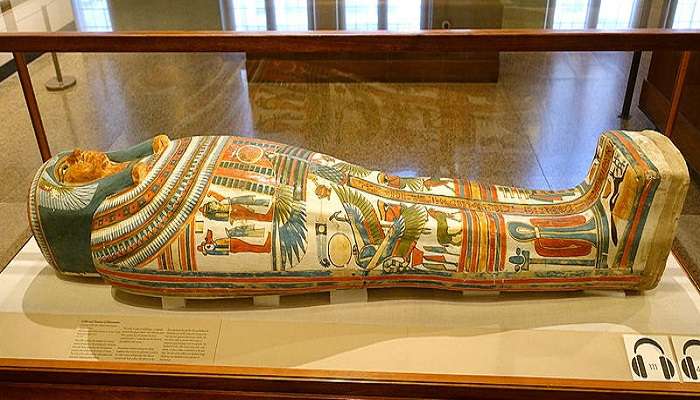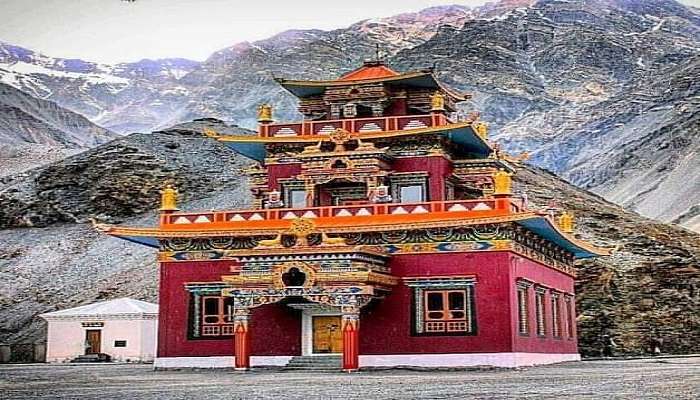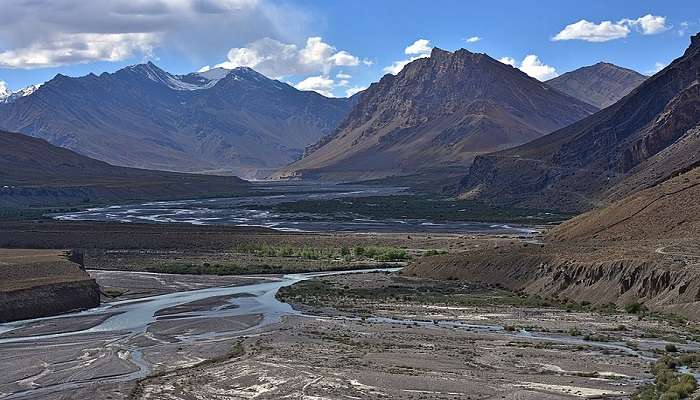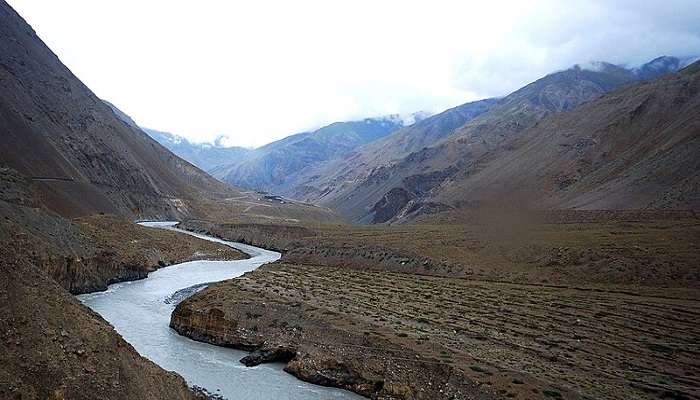Unveiling The True Soul Of Himachal Pradesh With Gue Village In 2025

The peaceful Gue Village, located in the mountainous Spiti Valley, is proof that the spirit of the Himalayas cannot be broken. This charming community invites tourists to explore its cultural richness, offering them a unique chance to immerse themselves in nature and tradition. Gue village is famous for the amazing discovery of a well-preserved mummy, believed to be that of a Buddhist monk who lived over 500 years ago. In addition to this historical find that has fascinated historians and archaeologists alike, it has also given rise to an aura of mystery and awe in the village.
The Enchanting Gue Village: Where Mountains Whisper Secrets

Gue Village is a mystery that takes a lot of time to find the city. The city of Gue lies on one of the corners of Spiti Valley and is near the Indo-Tibet border. There are two main ways of reaching Gue these include taking the Manali-Kaza road or following the Shimla-Kaza route. The Manali-Kaza route, at 264 km long, is the shorter of the two. It passes through the breathtaking landscapes on its way from Kullu Valley to Kaza: Rohtang Pass via Kunzum La Pass. To get to Gue Village from Kaza one has to cover 30 km.
The Shimla-Kaza road, in contrast, is lengthier at 356 km but it has a more picturesque course than the Manali-Leh circuit. This path allows travellers to pass by numerous hamlets and localities such as Narkanda, Sarahan and Nako among others. Moreover, this route passes through Kinnaur Valley which is famous for apples and old shrines before proceeding up into Spiti Valley together with Gue Village.
Must Read: Places To Visit In Himachal Pradesh
The Enigmatic Gue Mummy

People worldwide are amazed by the legend of the Gue Mummy. This amazing artefact was found when the Spiti Valley was rocked by an earthquake in 1975. It was hidden deep inside Gue, far from civilisation, where no one would consider looking for it. Sangha Tenzin, a Buddhist monk, is thought to be the identity of this mummy; its skin, teeth and nails are all still there, making it look as if he only fell asleep recently. According to legends, Sangha Tenzin was an esteemed lama who resided in the 15th century. It is said that when the people of the village were faced with annihilation by many scorpions, he voluntarily exterminated himself under instructions to be mummified by his followers, hence saving the village. The people explain that as he died, there was a rainbow on the horizon, which stopped the plague and marked a new history of the residents of Gue.
Not only has the Gue Mummy enchanted the public’s imagination but it has also sparked interest among scientists. The mummy has been studied thoroughly by researchers who employed sophisticated methods of investigation to demystify how it was preserved and shed light on information about someone who lived like him/her. Their discoveries have also enhanced our knowledge concerning spiritual and cultural beliefs in the long-established Tibetan Buddhist practice that persistently forms part of Spiti Valley’s heritage.
Exploring the Gue Monastery

Gue village also has the Gue Monastery, which is centuries old and serves as a signpost for spiritualism and proof of the deeply entrenched customs in this area. Those who come to the Gue Monastery can delve into some Tibetan Buddhist faith meditations and rituals. The interior murals of the building are complex, coupled with the Tibetan thangka paintings throughout its walls. Additionally, the lamas’ soft and calm chimes during prayer times tend to give a comprehensibly introspective effect that gives the sense of heaven. Visiting travellers are given an opportunity here since spiritual practices may help them better understand these philosophies, especially when combined with different events that were shaped over time around this belief system.
Beyond the monastery, the village itself is a wealthy cultural repository. In this area, local craftsmen work with beautiful fabrics and regard for ancient musical themes can be found. Besides, the festivals of the people and their interesting markets create an atmosphere of joy and happiness filled with traditional music and dances throughout the village.
Suggested Read: 15 Must-Visit Tourist Places in Himachal Pradesh
The Captivating Landscapes of Gue

Despite being the village’s main attractions, Gue Mummy and the monastery, the most appealing aspect of Gue is its outstanding natural beauty. Incredible pointy Himalayan peaks, untouched rivers and bright green fields surround the village and create an impression of quietness and peace. Those who love trekking could take thrilling hikes across rough landforms, admiring the plain but breathtaking environments that have always attracted brave people. If one prefers it, however, the calm atmosphere in town provides an ideal chance for people to enjoy the beauty of nature or interact with friendly locals.
One of Gue’s most beautiful natural marvels is the Spiti River, meandering through the valley and slicing through its tough landscape. One can see the force and beauty of this great river either by walking along its banks or through a thrilling rafting trip down the stream.
Culture In Spiti

For individuals interested in fully engaging with Spiti culture, Gue provides an opportunity to participate in how villagers go about their day-to-day activities. They may choose to help out on the farm, master cookery that is most commonly used or just talk for an increased perception about how Spiti people live. Such interactions promote both connection and maintenance of the village’s authentic identity amidst modernity. Improved understanding of the people from Spiti who managed to withstand the harsh conditions of the Himalayas for so long is gained by tourists when they meet with the indigenous population.
Further Read: Hill Stations In Himachal
Now that you have a list of things to keep in mind for your next vacation to enjoy at Gue Village, make sure you plan your trip to Himachal Pradesh to these fabulous spots accompanied by your loved ones, this experience will be more rewarding as you experience all the fun with them. Don’t miss out on these opportunities and book your tickets now!
For our editorial codes of conduct and copyright disclaimer, please click here.
Cover Image Credit : Nrr1729 for Wikimedia Commons
Frequently Asked Questions About Gue Village
In Gue Village, what is the main attraction?
The main attraction in the Gue Village is the mummy of a Buddhist monk, a 15th-century monk, who is believed to be of Sangha Tenzin. The mummy is kept at the Gue Monastery inside a small shrine.
How many years old is the Gue Mummy?
The Gue Mummy, according to carbon dating, is believed to be 500-600 years old. The discovery of the mummy occurred in 1975 following the collapse of the ancient Gue Monastery during an earthquake.
What more is there to do and see in Gue Village?
Gue Village, on top of the mummy, offers opportunities for sightseeing in its beautiful natural vicinity, tours to the Gue Monastery and meeting residents to know their culture and traditions.
What is the best time to visit Gue Village?
April to November is the best time to visit Gue village as roads are negotiable. Gue Village can be reached with difficulty during the winter months due to snow and ice.
Can I find a place to stay in Gue Village?
Tourists can find simple places like rooms for rent or guest houses in Gue Village. Those planning for the trip have to expect to live in traditional rural surroundings and book beforehand.
Can you tell me where Gue Village is located?
Gue Village is located at the border of Indo-Tibetan nearly 10499 feet above sea level in Spiti Valley, Himachal Pradesh, India found at Lahaul and Spiti district.
People Also Read:
Village Kothi Pathauli Village Niti Valley

With a passion for exploring and travelling to the roads long forgotten, experience the world through enthralling stories and adventures. Join me as I share my experiences at some of the world’s most popular tourist destinations and quench that pestering curiosity with something exciting!











